[my brushes, l to r: arenga, broomcorn, tampico, broomcorn]
It’s funny how things come full circle. I’ve only just properly (re)discovered traditional handmade brushes and brooms. I’d come across them in other countries where whisks and cleaning brushes made from natural materials are in everyday use, but not seen so many here. It’s been mostly plastic and unnatural colours for as long as I can remember.
So it is fantastically reassuring to see that there is a real and growing interest in brushes made with various fibres such as broomcorn, tampico, and arenga, which look great, feel lovely in the hand, are practical, long-lasting, cheap to produce, and can be like small works of art. It’s quite the return to what was once a very basic household item, mass-produced by hand, sold and peddled in their millions, now dressed-up with the best eco-credentials and sold at a price.
[tampico, my favourite, like a gigantic blusher brush]
A fortnight ago, I did a workshop with Rosa Harradine who is based in Wales, although this was at Stepney City Farm, with the sounds of noisy goats and an enthusiastically cheerful children’s entertainer in the background. Rosa’s brushes are beautifully neat and stylish - a while ago, I’d bought a couple as presents for cleaning coffee machines - and she is an excellent teacher, getting a roomful of beginners making very good approximations of her own work.
[bas-relief (early 1930s) on the former Royal School for the Blind, Liverpool]
In fact, they are really quite easy to make, requiring just the brush/broom fibre and some sort of cord. The latter is wound onto a rolling pin which sits under your besocked feet and allows you to create tension while binding the brush. It requires decent arm muscles and relatively strong hands; I’m sure once you get into a rhythm you can let your mind wander but to begin with it takes some concentration. In fact, brushes can be made purely by touch - as social enterprises and schools for the blind demonstrate(d). Look carefully, and you’ll see that many brushes in hardware shops are made this way eg Iris Hantwerk in Sweden.
[‘The Courtyard of a House in Delft’ (1658) by Pieter de Hooch]
If I’d dared to take my mind off the task, I’d have been appreciating the timeless simplicity of these useful brushes. In many ways, it’s a bit like knitting: minimal requirements which open up a whole world of creativity. The results look so much more complex than they actually are, and as with knitting, you can use fibres which have been around forever. My favourite is tampico which has a lovely tactile smooth bendiness and swishiness - it is impossible to resist fanning it out and brushing it over your hand. For the cord we used nylon which is good for first attempts because of its high tensile strength; hemp and linen can be used but even they can break with the hard pulling. A natural cord, though, would be more in keeping with the nature of these brushes.
I’d call what I made brushes, but they are also often referred to as brooms,
[George Burns, Gracie Allen and Fred Astaire in ‘A Damsel in Distress’ (1937) showing the variety of things that can be done with a whisk broom, including using it as a sporran]
and in her new how-to book The Handmade Broom, Cynthia Main, says they are Appalachian-style “whisk brooms”.
[from ‘Perfect Days’ (2023) a wonderful film with much cleaning]
But in fact many parts of the world have something similar such as shuro brushes from Japan which are often held together with copper wire (“for careful sweeping of bonsai”). ‘Broom' is now the in-word to designate these traditional, rediscovered brushes, but I think a distinction can be made between ‘brushes’ (softer, more flexible) and ‘brooms’ (tougher, more rigid).
As with so many basic domestic tools, plastic has replaced these natural materials - in this house, too. I’ve admired traditional brushes almost as beautiful sculptural objects, but not changed my habits. I think this maybe something to do with the associations they have. During one university summer holiday I went to India on a ridiculously tiny budget (we flew with Ariana Afghan Airlines on tickets bought in a bucket shop in Southall and changed planes in Kabul, as you do, and on the way back there were new bullet holes in the plate glass of the airport which was surrounded by Soviet tanks…) and one night we treated ourselves to a meal in a proper restaurant instead of a street/open air cafe. As I ate, I became aware of something going on under our table. To my horror, I saw it was a crouching man, silently sweeping up around our legs and feet. I knew all about the caste system, could see it in action, but this upset me.
[‘The Crossing Sweeper’ (1858) by William Powell Frith - a cleaner, better-fed one than Jo]
Later, I really did not like the story of Jo the crossing sweeper in Bleak House, a product of Dickens’ anger - and his sentimental streak;
[‘Cinderella’ (n.d.) by Joseph Morrison]
again, it turned brushes and brooms into symbols of endless sweeping, suffering and drudgery.
[‘Group Work’ by Aspen Golann. “This work subverts and reinterprets [and] references two-headed Appalachian wedding brooms”]
Although I do like their historical links with ‘irregular’ relationships, ‘living over the brush’ (as my Mum, who had a huge stock of good Northern phrases, would say), ‘jumping the broom’, and ‘broomstick marriages’. With perfect timing, I read in this weekend’s FT that even the wedding broom has been turned into a conceptual piece by Aspen Golann.
[‘The Lacemaker’ (1992) by Caspar Netscher]
If it’s not all dust and debris, it’s a lot to do with rather Puritanical domestic orderliness and neatness, especially in C17 Dutch genre paintings. The Lacemaker, says the Wallace Collection website, is “one of the most successful representations of idealised female virtue in Dutch art… Within the home, one of the housewife’s principal duties was to maintain its order and cleanliness, implied in this picture by the broom propped against the wall.” And yet, I see someone who has perhaps kicked off her shoes, left things unswept on the floor, put the broom where she cannot see it, and is absorbed in making a thing of complex beauty, maybe for herself.
[‘A View through a House’ (1662) by Samuel van Hoogstraten]
This lovely circular brush is almost like a barrier, a gate to keep the visitor out, together with the little guard dog, and speaks volumes about the values of the household. (It’s also similar to the brushes on the diagonal in images of broomstick weddings.) Yet even here there are a lot of uncanny/unheimlich details: the oversize busts, the parrot not escaping the open cage, the white object on the bottom stair, the cat with its tail up. It’s a visual puzzle, and to solve it, first you have to negotiate the life-size sweeping brush (the painting is 2m tall).
Rex Whistler was also fond of witty visual jokes. He painted a huge 17.5m mural (1936-37) in Plas Newydd. Look closely and you’ll see that he signed his work with a self-portrait, working in the half-shadows as a gardener sweeping a terrace. All sorts of explanations have been given for this, but I like the idea that he paints himself with a brush with a brush.
The Beatles had a brush with brooms, too. This was taken by Bob Whitaker in 1964 and used on the covers of various records. Who knows why he got them to pose with besoms, although they do make good pretend guitars (and dance partners) and, like washboards, sweeping brushes were used by skiffle groups to make an improvised double bass.
[‘Broom’ magazine covers]
Maybe it was to do with that old chestnut, the idea of a new broom sweeping away the old. No coincidence, then, that it was title of an art magazine which was published c1921-24 and which celebrated the “unknown, path-breaking artist”. (Repeated several times, ‘broom, broom’ also sounds like a car, with suggestions of speed and modernity, something Proust wrote about at length in Sodome et Gomorrhe published in 1922.)
Who would have thought that old-fashioned brushes could be so avant-garde? The broom has done a full revolution.
Happy Sunday!
PS while I am not interested in witches’ brooms and Harry Potter flying broomsticks, I wouldn’t say no to a magic self-sweeping broom à la Sleeping Beauty (1959).



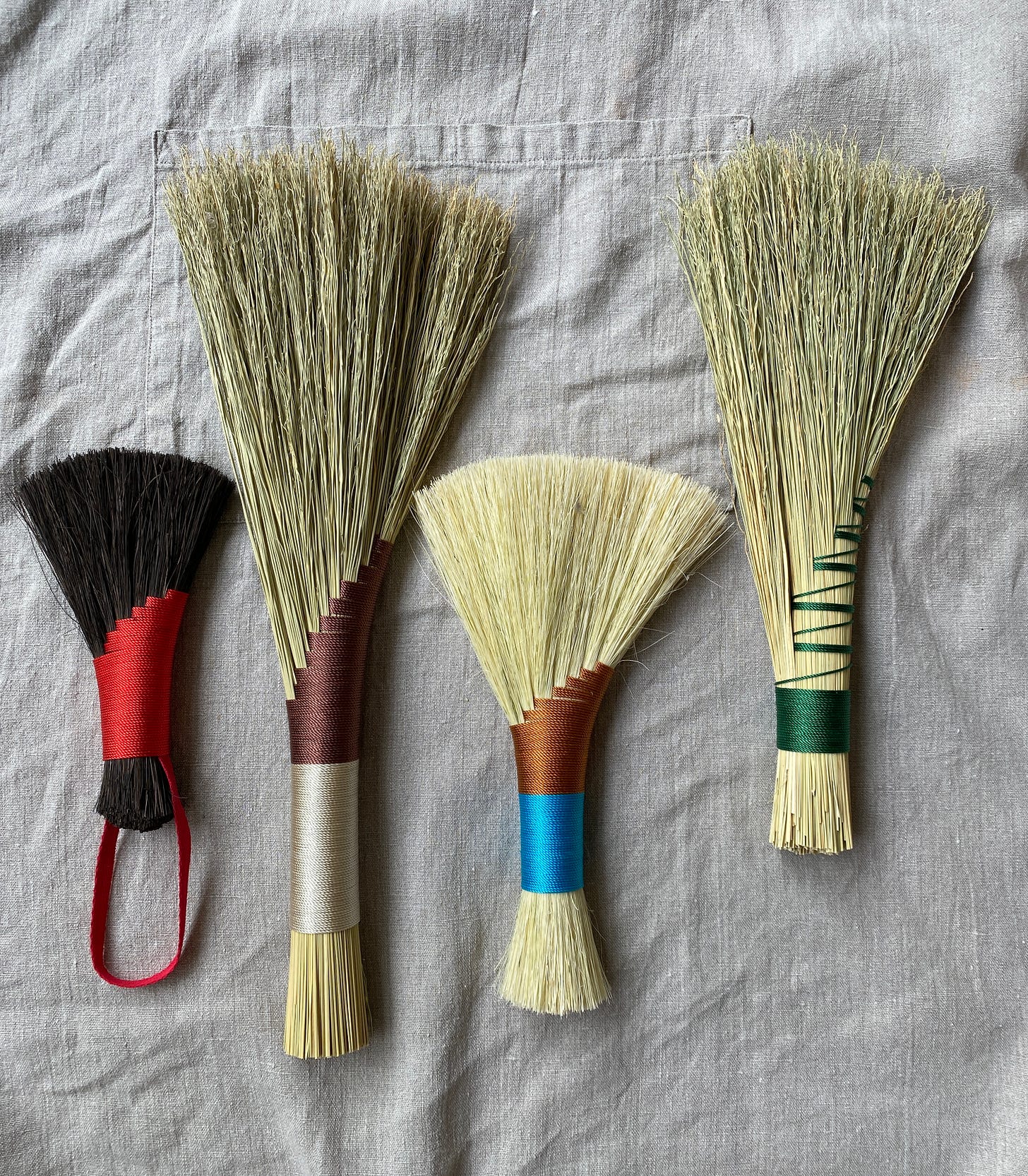

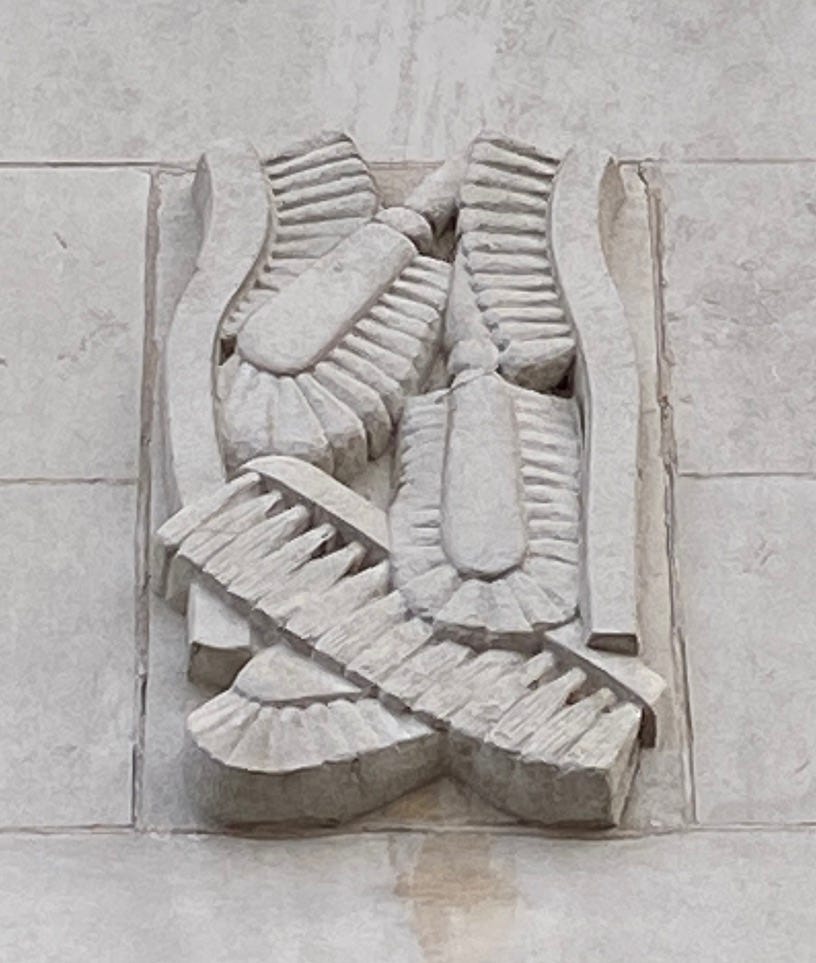
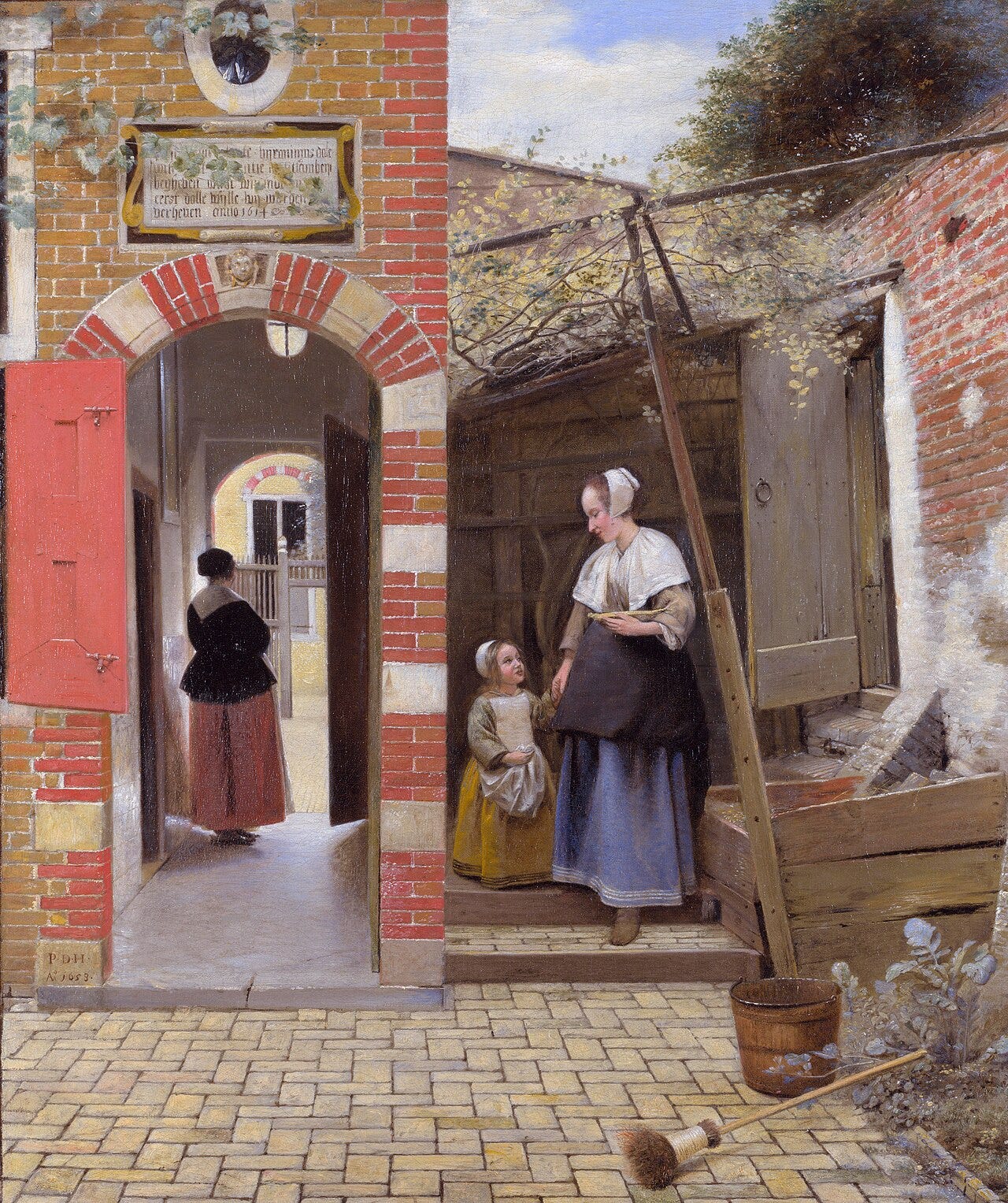

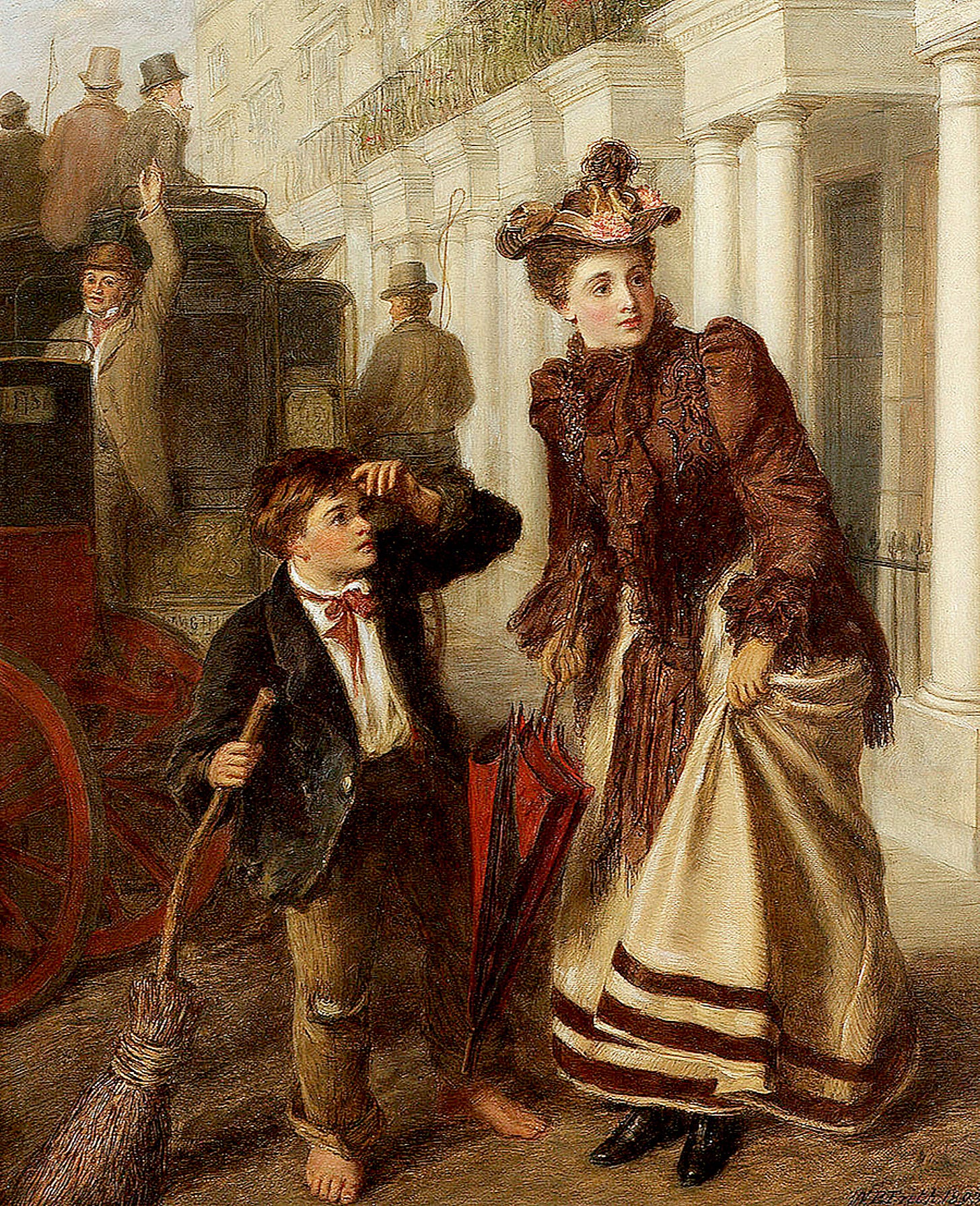





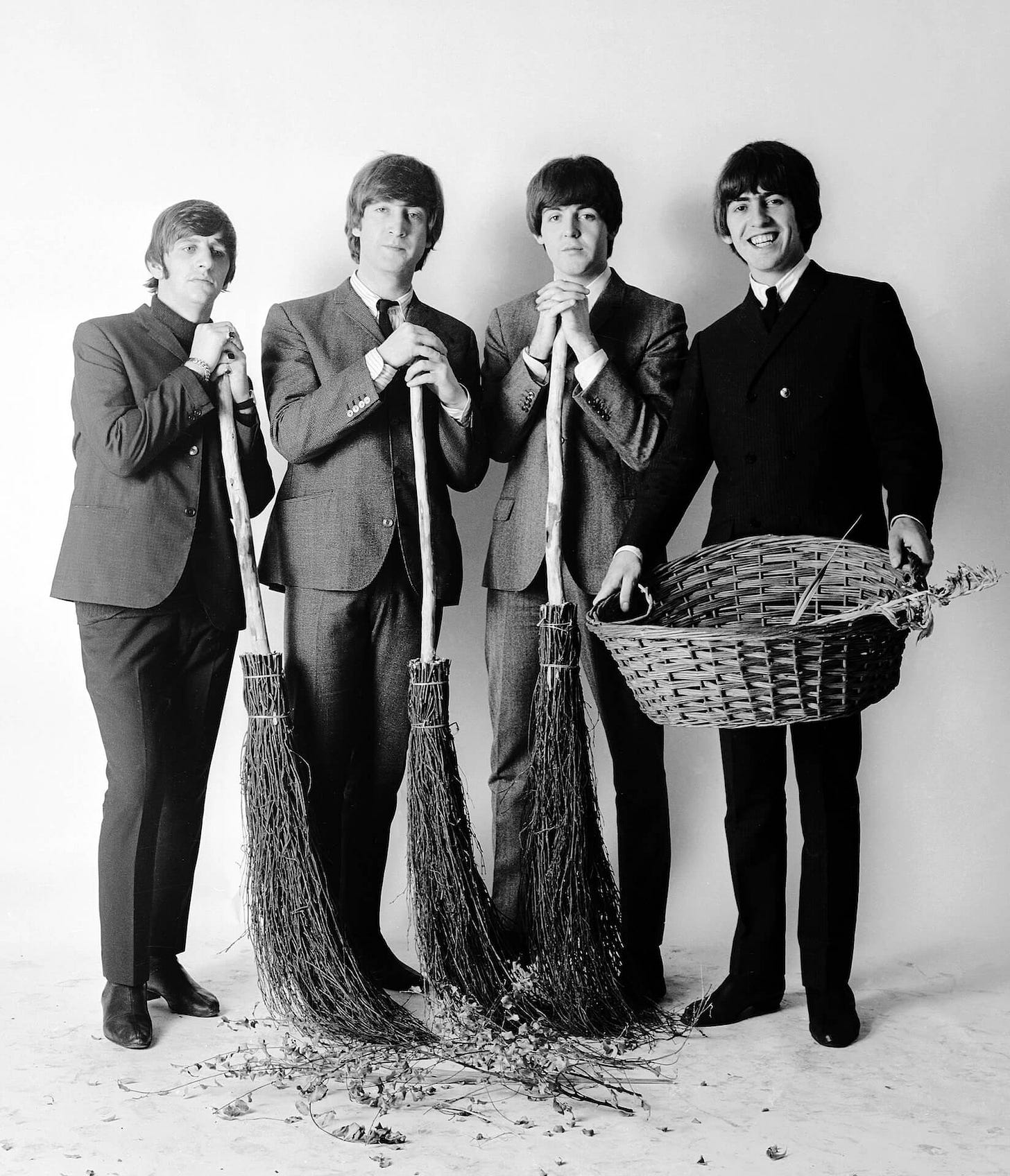

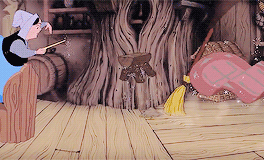
As a small child one of my greatest joys was walking in the fall with my great grandmother through the fields to cut broom sage for the coming year’s brooms. She was a first generation Appalachian child of Irish immigrants and burned her broom on New Year’s Eve so she would start with a fresh broom each year. And, yes, she swept the entire house New Year’s Eve and put the debris (and all the year’s bad) to the road! Angled brooms were made for cleaning along the ceiling and in the corners; small round ones for sweeping crumbs from tabletops; and a wee brush for her to pluck a single stalk from to test the only thing she made well — Irish soda bread! How glorious there are still folk making brooms and sharing their wonder!
I love this saying from Fay Weldon:
'There was a romance, a reverence and a dignity about housework then: I look forward to the day it is revived. It is too easy to believe that because something is traditionally women's work, that it is worth nothing. On the contrary.'